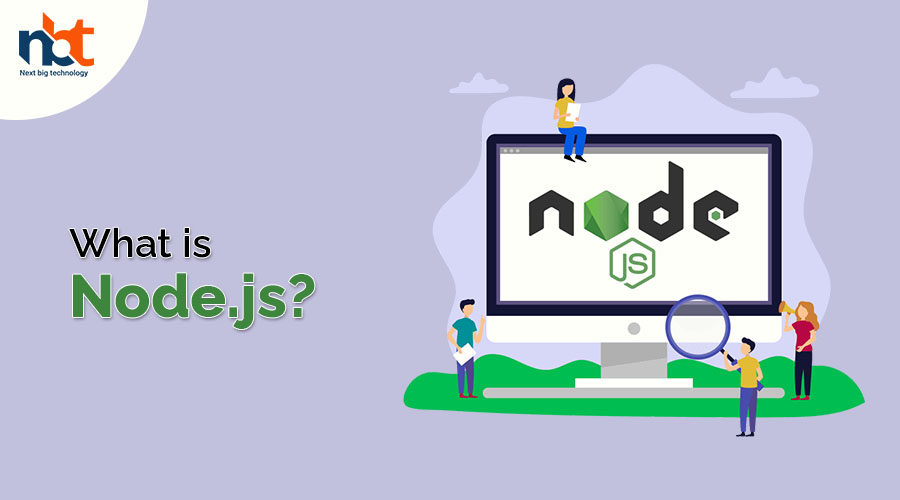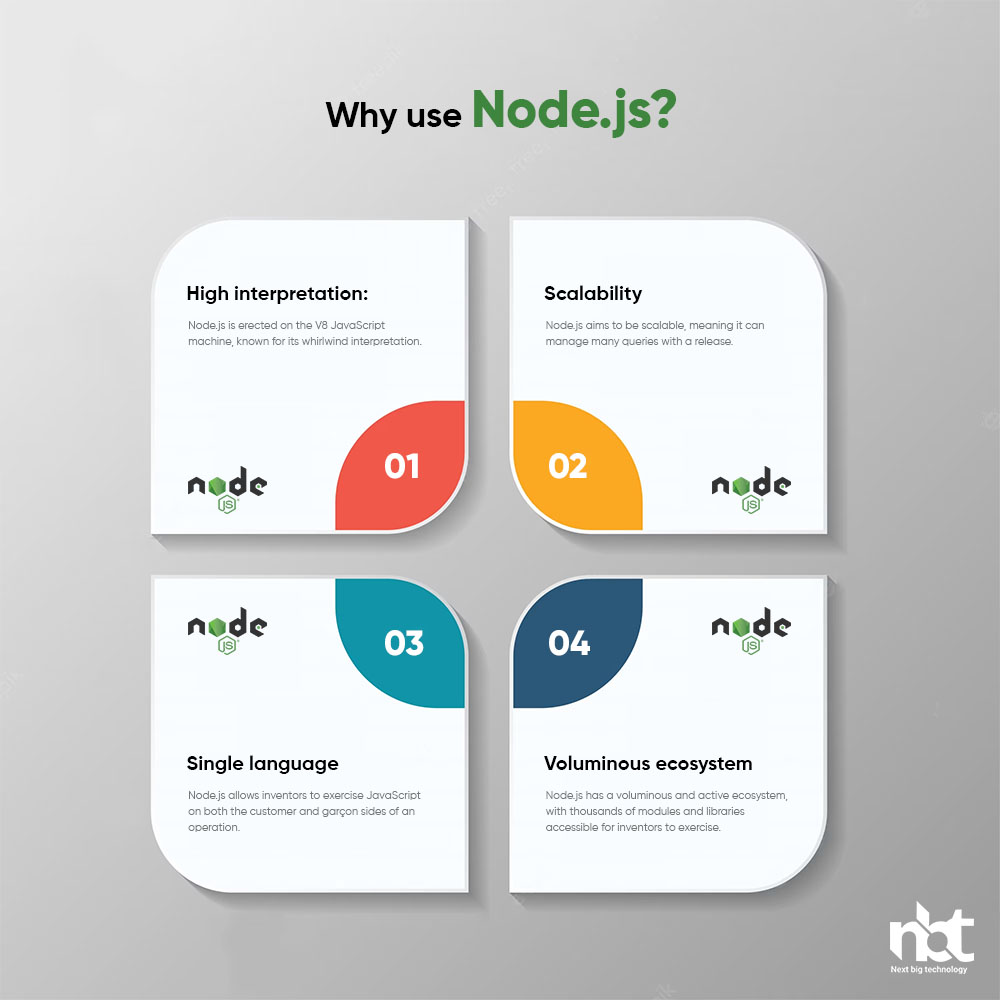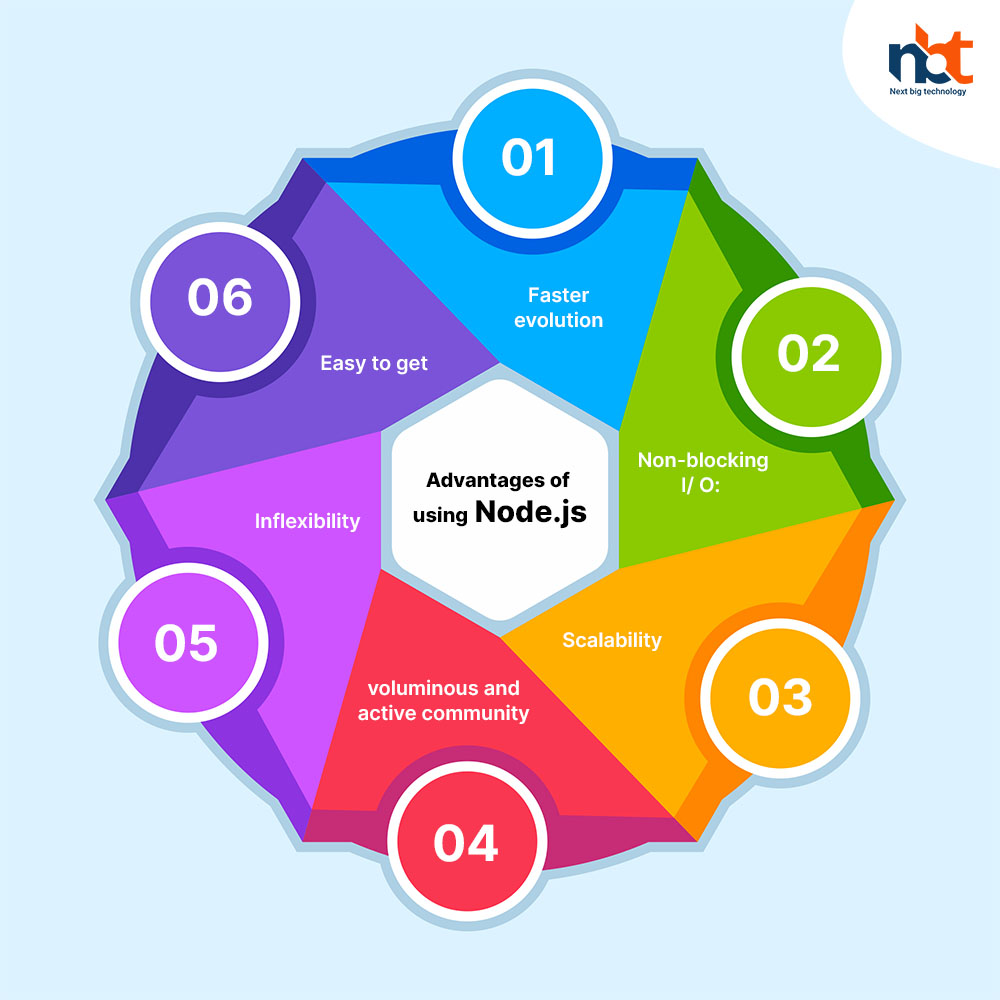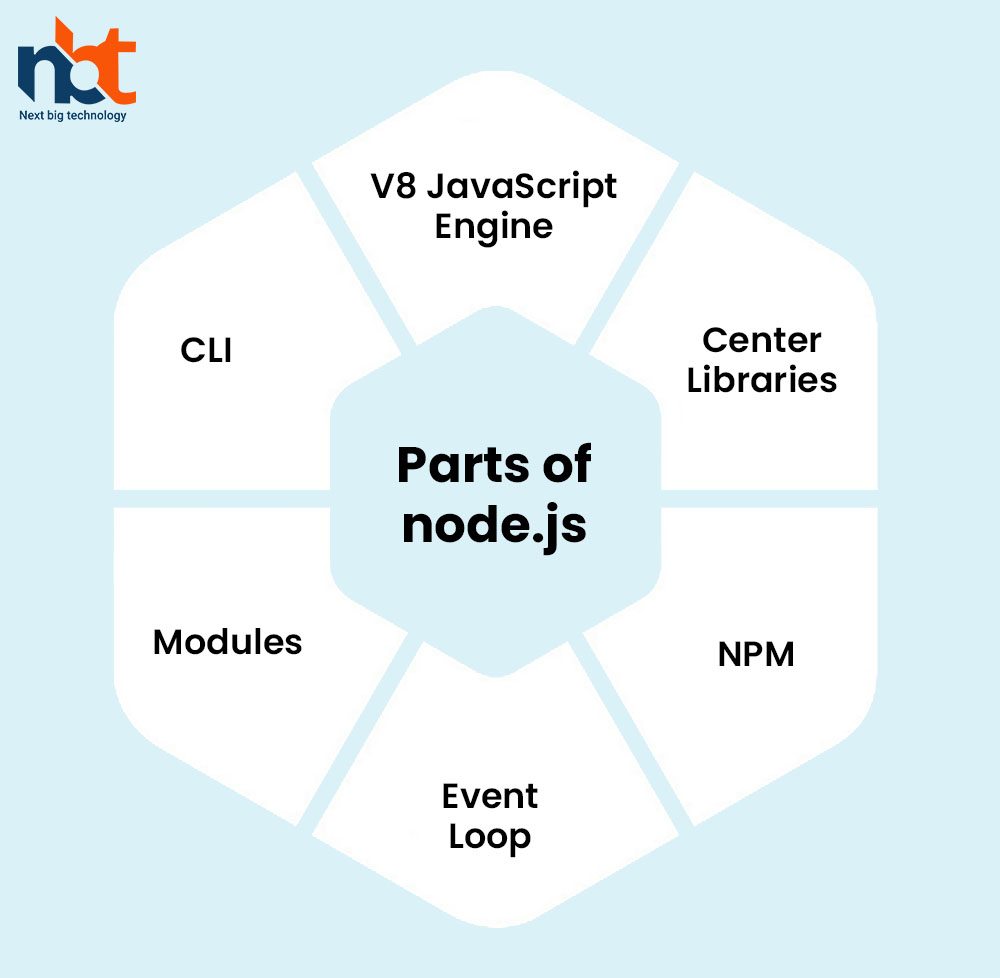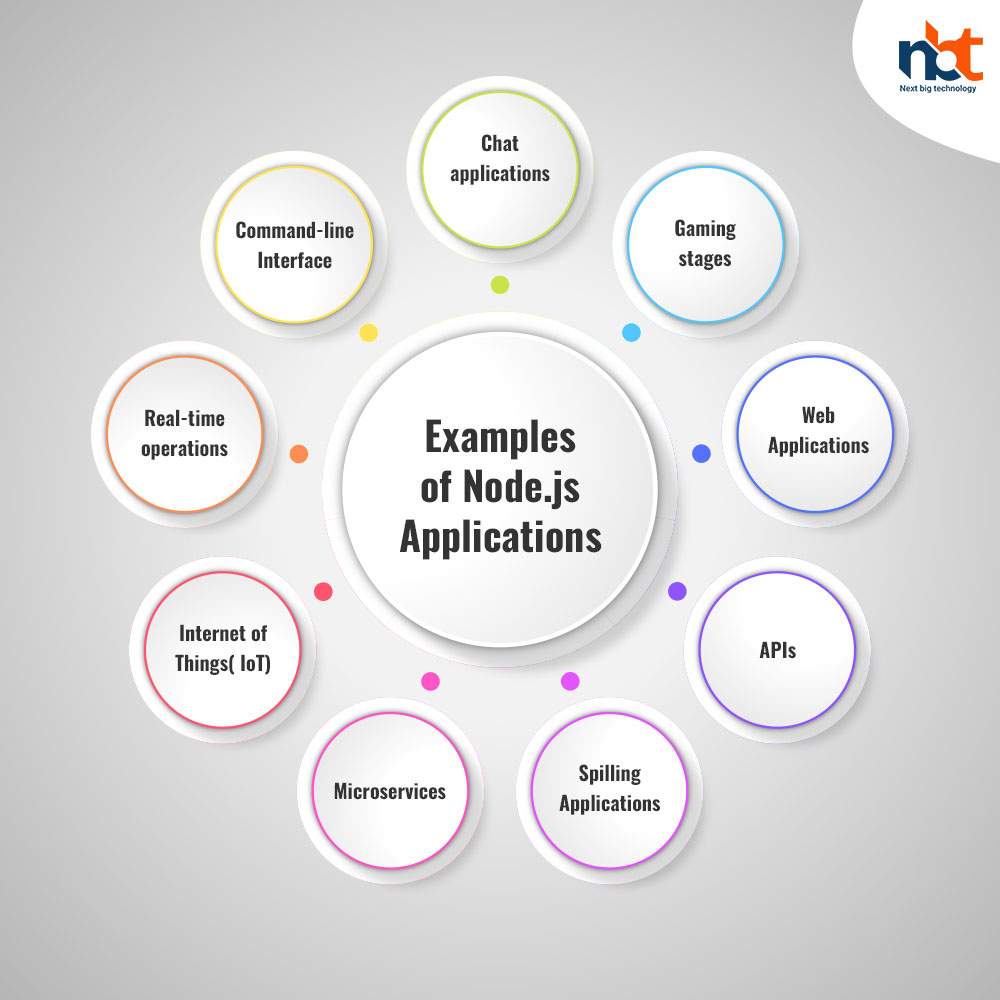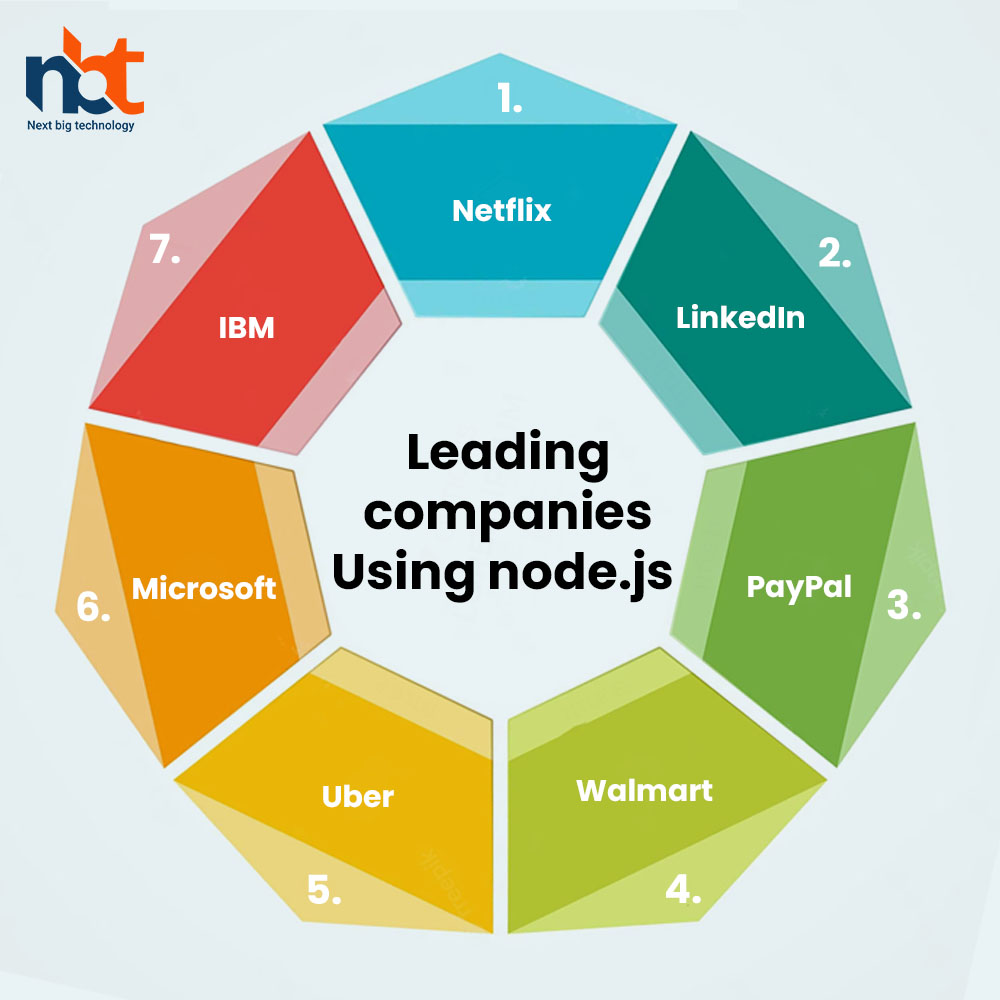Node.js may be an effective open-source runtime environment that’s utilized to construct quick and versatile applications. It is built on the V8 JavaScript motor that powers Google Chrome and permits engineers to utilize JavaScript on both the server and client sides. Node.js is known for its capacity to handle many associations simultaneously, making it a well-known choice for real-time applications, such as chat applications and online gaming stages. In this article, we’ll investigate what Node.js is, why you ought to utilize it, and how to induce it.
Table of Contents
What is Node.js?
Node.js is an open for all free coding source, a cross-platform runtime environment built on the V8 JavaScript engine. It was made by Ryan Dahl in 2009 to make the stage for building versatile organized applications. Node.js permits engineers to utilize JavaScript on the server side, making it conceivable to utilize a single programming dialect on both the client and server sides of an application. Node.js is planned to be quick, adaptable, and optimized for handling many concurrent associations.
Why use Node.js?
You should exercise Node.js for your future design for several reasons.
1. High interpretation:
Node.js is erected on the V8 JavaScript machine, known for its whirlwind interpretation.Node.js is aimed to be non-blocking, meaning it can manage a voluminous number of connections contemporaneously without blocking the event circle.
2. Scalability:
Node.js aims to be scalable, meaning it can manage many queries with a release. This makes it a popular liberty for real-time operations, similar to Converse operations and online gaming platforms.
3. Single language:
Node.js allows inventors to exercise JavaScript on both the customer and garçon sides of an operation. This means that inventors can exercise a single programming language for the exclusive design, saving time and reducing the codebase’s complication.
4. Voluminous ecosystem:
Node.js has a voluminous and active ecosystem, with thousands of modules and libraries accessible for inventors to exercise. This makes it ready to detect common or garden case results and append new functionality to your operation.
How to use Node.js
- Getting started with Node.js is fairly ready, and several tools and coffers are accessible to support you get; up and running snappily.
- Install Node.js: The first step in utilizing Node.js is to install it on your system.Node.js can be downloaded from the sanctioned Node.js website, and installers are accessible for Windows, Mac, and Linux.
- Once Node.js is installed, you can produce a new design by creating a new directory and running any command in the terminal. This will produce a new Node.js design and help you answer many questions about the design, similar to the design name, interpretation, and definition.
- Install dependencies: Node.js uses a package director called npm( Node Package Manager) to take dependencies. You can install dependencies for your design by running a law in the terminal to install the prescribed reliance.
- Write your code: Once your design is set up, you can start authoring your law.Node.js uses JavaScript; consequently, if you’re familiar with JavaScript, you should be suitable to start authoring law immediately.
- Run your code
Advantages of using Node.js
1. Faster evolution:
Node.js allows inventors to exercise JavaScript on both the customer and garçon sides of an operation, which can lead to faster evolution moments. This is because inventors can exercise a single language for the exclusive design, reducing the codebase’s complication and making it easier to conserve.
2. Non-blocking I/ O:
Node.js aims to be non-blocking, meaning it can manage a voluminous number of connections contemporaneously without blocking the event circle. This makes it popular for real-time operations, similar to Converse operations and online gaming platforms.
3. Scalability:
Node.js aims to be scalable, meaning it can manage many queries with the release. This makes it a popular liberty for operations that need to manage a high measure of business.
4. voluminous and active community
Node.js has a voluminous and active community, meaning thousands of modules and libraries accessible for inventors to exercise. This makes it ready to detect common or garden case results and append new functionality to your operation.
5. Inflexibility
Node.js is an adjustable runtime terrain that can be exercised for various operations, from simple trap operations to daedal real-time operations.
6. Easy to get:
Node.js is based on JavaScript, which is a popular programming language that’s ready to get. This means inventors formerly familiar with JavaScript can snappily get up to celebrity with Node.js.
Also Read : React and NodeJS: A Deadly Combination for Web Application Development
Reasons Behind the Popularity of node.js:
1. Speed and Execution:
Node.js is built on Google’s V8 JavaScript engine, Google’s fastest engine for programmers. Node.js takes advantage of this motor to execute JavaScript code on the server side, which permits quicker and more effective handling of demands. This makes Node.js an incredible choice for applications that require quick and responsive execution.
2. Single Language for Client-side and Server-side:
Node.js permits engineers to utilize a single dialect, JavaScript, for the client- and server-side improvement. This makes it less demanding for designers to switch between client-side and server-side advancement and decreases the complexity of the codebase.
3. Huge and Dynamic Community:
Node.js encompasses an expansive and dynamic community of designers who contribute to its advancement and make modern modules and libraries that make it less demanding to construct applications with Node.js. This implies that designers have a wide run of instruments and assets that can offer assistance to construct superior applications with Node.js.
4. Open Source:
Node.js is an open-source stage, which implies that it is free to utilize and can be adjusted and customized by anybody. This has made a difference in cultivating a huge and dynamic community of designers who are continually progressing and expanding the stage.
Also Read : Reasons To Choose NodeJS for Web App Development
Parts of node.js:
Node.js comprises key components that supply a capable and adaptable runtime environment for building server-side applications. Here are the most parts of Node.js:
1. V8 JavaScript Engine:
Node.js is built on the V8 JavaScript motor, which is additionally utilized by Google’s Chrome browser. The V8 motor compiles JavaScript code into machine code, which makes it quick and productive.
2. Center Libraries:
Node.js incorporates a set of center libraries useful for building server-side applications. These incorporate modules for working with record systems, networking, streams, and more.
3. NPM:
NPM (Node Package Manager) may be a bundle supervisor for Node.js that gives access to thousands of modules and libraries made by the Node.js community. NPM makes adding functionality to your Node.js applications simple by introducing and bringing in modules.
4. Event Loop:
The occasion circle may be a key portion of Node.js’s non-blocking I/O show. It oversees the execution of offbeat tasks, such as I/O operations, by lining them and executing them in a non-blocking way.
5. Modules:
Node.js employs a secluded design that permits designers to form reusable code components. Modules can be composed in JavaScript and traded as reusable components that can be utilized in other parts of an application.
6. CLI:
Node.js includes a command-line interface (CLI) that gives designers a set of instruments for working with Node.js applications. The CLI includes instruments for overseeing bundles, investigating code, and more.
These components supply a capable and adaptable runtime environment for building server-side applications with Node.js. Engineers can use the center libraries and modules given by Node.js, as well as the thousands of modules accessible through NPM, to construct fast, scalable, and effective applications.
Also Read : Why Some Developers Prefer Nodejs-&-Reactjs For App development
Examples of Node.js Applications
1. Chat applications:
Node.js is a well-known choice for real-time chat applications because of its non-blocking I/O and versatility. Illustrations of chat applications built with Node.js incorporate Slack and WhatsApp.
2. Gaming stages:
Node.js is additionally a prevalent choice for online gaming stages since of its capacity to handle a huge number of associations at the same time. Cases of gaming stages built with Node.js incorporate Steam and Roblox.
3. Web Applications:
Node.js can be used to construct quick and proficient web applications, counting conventional server-rendered and cutting-edge single-page applications (SPAs) that depend intensely on client-side JavaScript. Node.js can handle many concurrent associations and is well-suited for real-time applications like chat apps and collaboration apparatuses.
4. APIs:
Node.js is regularly utilized to construct APIs (Application Programming Interfacing) that permit diverse frameworks and applications to communicate with each other. Node.js’s non-blocking I/O demonstrates it is well-suited for handling huge volumes of API demands.
5. Spilling Applications:
Node.js’s spilling capabilities make it well-suited for building applications with expansive volumes of information, such as media-spilling administrations and information-preparing applications.
6. Microservices:
Node.js’s secluded design and back for microservices make it popular for building versatile and proficient microservices-based structures.
7. Internet of Things( IoT)
It may be a current liberty for erecting IoT operations due to its featherlight print and ago for event-driven programming.
8. Real-time operations
Non-blocking I/O demonstrates and ago for WebSockets make it a current liberty for erecting real-time operations like converse operations, online gaming stages, and cooperative instruments.
9. Command-line Interface
CLI( Command Line Interface) instruments are well-suited for erecting command-line bias and serviceability, similar to constructing instruments, assignment runners, and transferring scripts.
Also Read : AngularJS Vs ReactJS VS NodeJS – Which One Is Best for You?
Leading companies Using node.js
A wide range of companies over specific businesses has embraced Node.js. Here are a few of the driving companies that utilize Node.js:
1. Netflix:
Netflix is one of the biggest clients of Node.js, utilizing it to control their site and spilling benefits. Netflix employs Node.js to handle tall activity volumes and supply quick and responsive client involvement.
2. LinkedIn:
LinkedIn employs Node.js to control its versatile application backend. The company chose Node.js because of its versatility and capacity to handle real-time information.
3. PayPal:
PayPal employs Node.js to handle installment handling for their site. The company chose Node.js for its capacity to handle tall volumes of activity and capacity to handle real-time information.
4. Walmart:
Walmart employs Node.js for its eCommerce stage. The company chose Node.js because of its capacity to handle tall volumes of activity and its adaptability.
5. Uber:
Uber employs Node.js for their backend administrations. The company chose Node.js since of its capacity to handle real-time information and its back for WebSockets.
6. Microsoft:
Microsoft employs Node.js for its cloud computing stage, Sky Blue. The company chose Node.js because of its adaptability and ability to handle real-time information.
7. IBM:
IBM employs Node.js for their cloud computing stage, IBM Cloud. The company chose Node.js because of its versatility and its bolster for microservices.
Conclusion
Node.js is an important and adjustable runtime environment that manages many connections contemporaneously. It’s a popular liberty for real-time operations, similar to converse operations and online gaming platforms, and great liberty for erecting trap operations.Node.js is ready to get and has a voluminous and active community that provides thousands of modules and libraries to support inventors in making their applications. However, scalable and adjustable runtime terrain for your future design, If you appear for afast.js, is surely worth esteeming.
Thanks for reading our post “What is Node.js? know all about Nodejs”. Please connect with us to know more about Nodejs Development.







